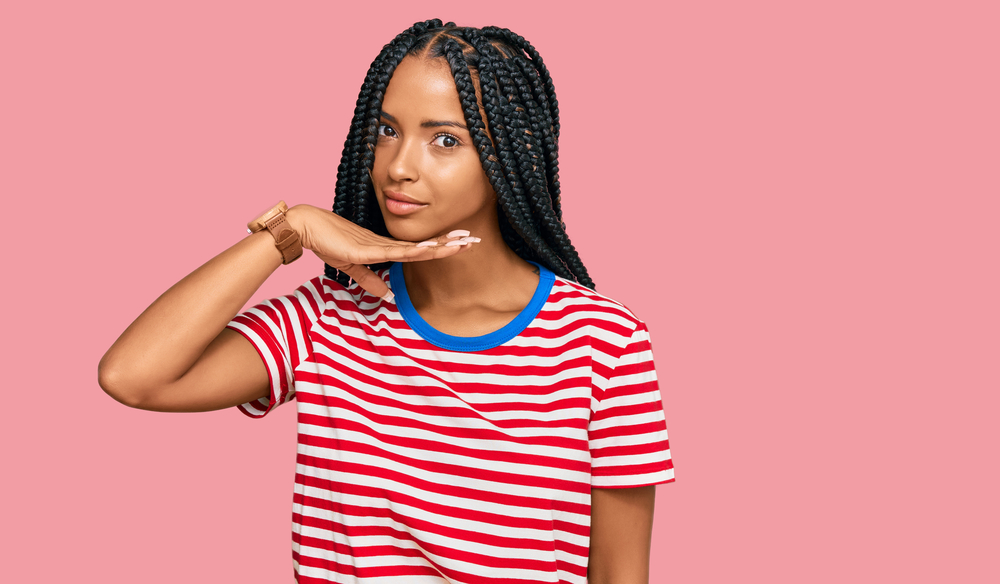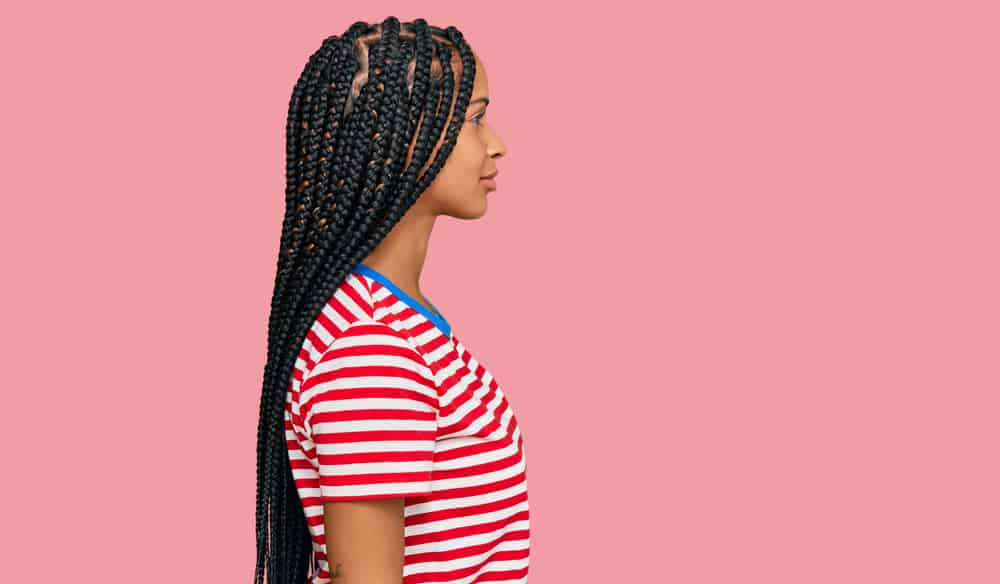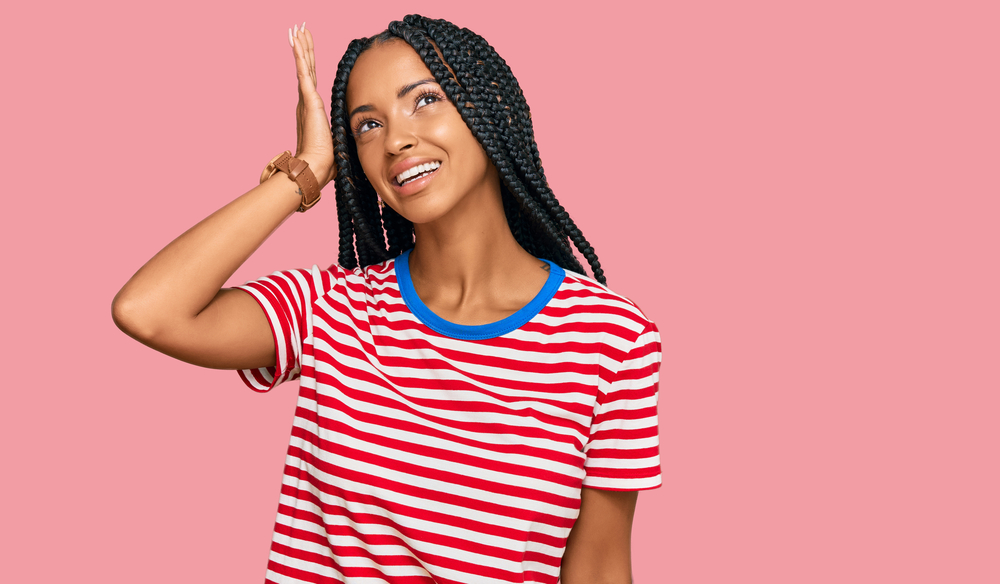
Most of us know that braids are nowhere near new; they have been around for ages. But if you’ve ever stopped to wonder who invented braids, you may have come up empty.
In this article, we’re going to dive into the rich history of hair braiding around the world. By the end, you’ll finally know who invented braids and learn how people worldwide have embraced them.
Table of Contents
Who Invented Braids?
The first braids were likely worn by Africans as early as the year 5000 BCE. Even cave paintings dating back to 3000 BCE depict cornrows and braids. This is why you often see people refer to braids as a historically African style.

The History of Braids
Although ancient Africans wore braids first, they were not the only people who did. Due to their beauty and functionality, braids have been a staple in most corners of the globe.
In this section, we’ll look at braids from several cultures.
The History of Braids In Africa
As the cradle of civilization, Africa holds the distinct honor of being the birthplace of braids. Consequently, they have been seen in the vast majority of African countries. There, various cultures put their own spin on braided hairstyles.
All across Africa, braids were used to indicate a person’s:
- social and marital status
- religion
- wealth
- age
- tribe affiliation
The more intricate and ornate the braids, the more money and time it took to install them. For a woman to spend hours on their hair, they must have had the luxury of free time.
Sometimes, small embellishments like shells, beads, flowers, or twigs are used to decorate braids. Some African tribes even adorn their braids with precious metals and coins.

In addition to braiding their natural hair, Africans have a long history of wearing braided wigs. Elite Egyptian men and women would wear braided
The children of Egyptian pharaohs would wear both their natural hair and wigs in a hairstyle called a Horus lock. A Horus lock is a single braid worn on the side of the head.
They would secure it with a clasp and twist the ends into a claw-like spiral.
Among Africans and people of African descent, braids transcend fashion. They’re a practical way to keep long hair from getting in the way and serve as a protective style.
Kinky and curly hair textures are more prone to breakage, and braids are a way to protect fragile strands. Braids allow for a long-term hairstyle change, so your hair doesn’t have to incur the damage of being manipulated and styled daily.

The History of Braids In Europe
In medieval European society, women were expected to remain modest outside their homes. It was socially unacceptable to have their hair loose and exposed in public.
As a result, women wore their hair in thick braids that they pinned to their heads to appear chaste. Some young men and women grew their hair long and styled it into fine braids in ancient Rome and Greece.
The time-consuming style was most commonly worn by nobles. Men from lower classes would wear their hair in simple single or double plaits.
Braids were styled in intricate designs hardened with beeswax in later Grecco-Roman times. Some even colored the braids with dyes made from ash or henna. You can see some of these elaborate designs immortalized in paintings and sculptures.
When it comes to braids in ancient Europe, many people point to the Vikings. Did Vikings invent braids? We don't think so, although braids were often worn under Viking warriors’ helmets to help keep their hair out of the way as they fought.
The style (i.e., "Viking braid") was so practical that Viking men would also braid their long beards before going into battle. They would either braid their beards into single braids or multiple braids.
Although married Viking women typically wore their hair in a modest bun, unmarried women experimented with different styles. They would frequently wear their hair loose, braided, or in dreads.
They would embellish these styles with decorated caps and brightly colored ribbons to display their wealth or celebrate a special occasion.

The History of Braids In North and South America
Across the Americas, countless Native American tribes wore braids. Among some Native American tribal lore, braids represent the oneness of thought.
The people saw a symbolic strength in how individual hair strands were brought together and unified by a braid. Some Native American warriors wore their hair in a braided scalp lock style (now called a mohawk).
This unique style involved shaving all of their hair, aside from a small tuft at the crown of their heads. The remaining hair was either matted into a single dreadlock or braided into a french braid.
The scalp lock represented the warrior’s strength and fighting prowess.
When enslaved Africans came to Colombia, they brought their mastery of braids with them. Braids were used to sneak in things like seeds and secret messages written on small scraps of paper.
Cornrows were even used to create detailed maps of future escape routes.
In ancient Peru, braids were worn by men and women alike to show social status. Ancient Peruvians would wrap the braid around their heads and decorate the ends of the braids with tassels, pom poms, and scraps of fabric.
The number of times the braid was wound around their head indicated their status. The more times they wrapped the braid, the higher the position. Wearing braids was much more than just a hairstyle.
Through a combination of sophisticated preservation techniques and Peru’s icy climate, human remains have given modern humans a glimpse into ancient Peruvian hairstyles.
Recently, a mummy sporting a full head of tiny, tight braids has been found. Many modern Peruvians still wear these beautifully adorned braids.

The History of Braids in Asia
In most of Asia, long hair is considered a sign of health and beauty. Consequently, braids have been utilized mainly as a way to secure long strands and keep them from getting in the way.
In southeast Asian countries like India, a single braid that falls down the back is the most popular style among women (e.g., french or dutch braids).
In Thailand, braids are surprisingly uncommon and are usually reserved for young boys (e.g., Phom Pia braids). Many young girls kept their hair in simple braids until their 15th birthday in ancient China.
Once they reached 15, they took part in a coming-of-age ceremony where their hair would be washed, combed, twisted, and secured with a ceremonial pin. Upon completion, the girl would be considered ready for marriage.
In some central Asian cultures, braids are worn during special occasions and as an everyday hairstyle. Sometimes, they are seen as a way to ward off evil spirits.
As a result, some brides will style their hair in ornate braids on their wedding night in hopes that the marriage gets off to a good start.
The Uyghurs use braids to distinguish between married and unmarried women. While both groups wear their hair long, married women typically fashion their hair into two braids.
On the other hand, single women can wear their hair in as many braids as they like! In some circles, the more braids a woman has, the more beautiful she becomes.

- Do Box Braids Damage Straight Hair?
- Is Knotless Better Than Box Braids?
- Are Braids Better Than Dreads?
- Are Box Braids Part of Mexican Culture?
So, there you have it! While it’s hard to pin down an exact date that braids were invented, one thing is for sure; the earliest evidence of braids comes from Africa.
We hope this article has helped give you some insight into the origins of braids and how various cultures have chosen to embrace the style in unique ways.




